
Blog

COP30 ends — with a few achievements to move forward
With more than 25 hours of delay, the 30th UN Climate Change Conference (COP30) has come to an end. The so-called "Amazon COP," held in the Brazilian city of Belém do Pará, leaves behind disappointment for failing to change course, but also some advances that can help push climate action forward. It was not a total failure: multilateralism remains intact, though battered.COP30 was marked by the presence of Indigenous peoples, especially from the Amazon basin, who filled the streets and side events. However, according to reports, only a fraction of these delegations gained access to the formal negotiation rooms, while a disproportionate number of representatives from the fossil fuel industry participated in the official event. This imbalance reflects the democratic health of the climate regime: at the Amazon COP, the power of Indigenous and Afro-descendant peoples was felt in the streets, but their voices remained underrepresented in decision-making spaces.A few days into the conference, the latest synthesis report of updated nationally determined contributions was released. Its message was more bitter than sweet, but it offered one important takeaway: although the gap to keep global warming below 1.5°C remains enormous and complex, the report confirms that the Paris Agreement has indeed helped steer the challenge. We are in a better position than in a scenario without the agreement: projected emissions growth has been slowed, though not nearly enough.At this point, it is clear that COPs will not "save the world," but it also seems impossible to overcome this crisis without the cooperative platform they provide. From that perspective, it is worth asking what COP30 leaves us. The approved agreement: Global MutirãoThe word "Mutirão" references the spirit of collective effort—body and soul—that Brazil sought to bring to the international negotiation process at this COP.The approved agreement reiterates the goal of keeping the planet’s temperature increase below 1.5°C, acknowledging that time is running out. To that end, it proposes two voluntary mechanisms, led by the Presidency, which for now seem more like statements of good intent than tools with teeth: a "Global Implementation Accelerator" and the "Belém Mission for 1.5°C."On financing, the text establishes a two-year work program on Article 9.1 of the Paris Agreement, which concerns the public resources developed countries must provide, understood in the context of Article 9 as a whole.A footnote was added to clarify that this does not prejudge the implementation of the new global goal. Civil society organizations warn that this formulation risks further diluting developed countries’ specific obligations under the narrative of "all sources of financing," without clear rules on who must actually provide the resources and under what conditions. The real value of all this remains to be seen in practice. What was gained: A new mechanism for a just transitionA major achievement of COP30 was the adoption of the Belém Action Mechanism (BAM), a new institutional arrangement under the Just Transition Work Programme. It was the main banner carried by organized civil society.The mechanism is designed as a hub to centralize and coordinate just transition initiatives around the world, providing technical assistance and international cooperation to ensure the transition does not repeat the mistakes of the fossil era.The text incorporates many of the principles championed by Latin American civil society—including human rights, environmental and labor protections, free, prior and informed consent, and the inclusion of marginalized groups—as essential elements for achieving ambitious climate action.Even with gaps in safeguards and governance definitions, the BAM is a concrete step forward for this COP on climate justice. It creates a starting point to discuss not only whether there will be a transition, but how it will be done and under what rules, so as not to replicate the logic of the fossil economy. Its design and implementation will be debated at upcoming COPs, where it will be crucial for the region to arrive with solid, united proposals. Ending fossil fuels and deforestation: Two “almosts” that move us forwardAn agreement to leave behind fossil fuels and end deforestation—directly addressing the main drivers of the climate crisis—"almost" made it into the final decision.More than 80 countries from both the global north and south called for a roadmap to exit oil, gas, and coal. More than 90 supported a roadmap to stop and reverse deforestation by 2030. Although these requests made their way into drafts of the closing decision, they disappeared from the final text after resistance from major fossil fuel producers.Still, we do not leave empty-handed: Brazil, as COP30 Presidency, announced it will advance these roadmaps outside the formal framework of the UNFCCC. For the fossil fuel phaseout, Colombia committed to co-organize, with the Netherlands, the first global conference on the topic in April 2026.Although these items were not secured within the official negotiations, it is worth celebrating that—for the first time—such a broad coalition of countries united to achieve them. These two "almosts" matter: they set a new political and legal baseline for the rounds ahead. Two tools to advance adaptationCOP30 delivered tools to keep adaptation negotiations moving forward.The Mutirão decision calls for tripling collective adaptation finance by 2035, tied to the $300 billion USD per year agreed under the new global goal. This falls short of what the poorest countries asked for (tripling by 2030, with an explicit figure) and lacks clarity or guarantees regarding the role of developed countries. But it is a political anchor worth building on.At the same time, a first package of 59 indicators was adopted for the Global Goal on Adaptation (GGA). Several African countries and experts described them as "unclear, impossible to measure, and in many cases unusable," because they sacrifice precision and grounding in community realities in order to unblock the agreement. In response, the text included the "Belém–Addis Vision," a two-year window to correct flaws and make the framework operational by 2027.In short, we have more promises of money and an indicator framework weaker than necessary, but also a process through which the region can continue pushing for a useful GGA and for fair, sufficient adaptation finance. Loss and damage: Slow and uncertainProgress on this issue has been painfully slow compared with the urgency of the problem. At COP30, the third review of the Warsaw International Mechanism was finally approved. The result is frustrating: discussions have taken a decade while communities are already paying the cost of warming.On the other hand, the Loss and Damage Response Fund, created two years ago, issued its first call for proposals, with an initial package of $250 million USD in grants available over the next six months. The Fund has $790 million USD pledged, but only $397 million USD actually deposited—an enormous gap compared to the hundreds of billions estimated annually for developing countries.The expected political pressure for developed countries to scale up contributions was largely diluted in the final text, although the Fund was at least linked to the new global financing goal agreed at COP29. A new Gender Action PlanCOP30 concluded with the adoption of a new Gender Action Plan under the renewed Lima Work Programme. The Plan identifies five priority areas: capacity-building and knowledge; women’s participation and leadership; coherence among processes; gender-responsive implementation and means of implementation; and monitoring and reporting. It also provides a roadmap to ensure climate action is truly gender-responsive, with indicators to track progress. Methane: A super-pollutant still lacking the spotlight science demandsAt COP30, short-lived climate pollutants—especially methane—gained visibility thanks to a dedicated pavilion and dialogues with regional and global actors. The Global Methane Status Report 2025 was also presented, noting “significant” progress since the 2021 launch of the Global Methane Pledge. However, it warns that current progress remains far from the goal of reducing methane emissions by 30% by 2030.In the official negotiations, the draft of the Sharm el-Sheikh Mitigation Ambition and Implementation Work Programme included an explicit reference to methane mitigation through proper waste management, but that mention was removed from the final text, leaving only a general call to improve waste management and diminishing the focus on the urgent need to reduce emissions of a pollutant whose mitigation is essential to achieving the Paris Agreement goals. Still, during COP30, the global “No Organic Waste (NOW) Plan to Accelerate Solutions” was launched, aiming to reduce methane emissions from organic waste by 30% by 2030.Overall, this COP missed a crucial opportunity to advance its core objective. If we truly want to stay on track with the Paris Agreement, we must treat methane as what it is: a decisive opportunity we are still not seizing. How we close COP30 and prepare for the nextCOP31 will be held in Turkey, under the presidency of Australia. And despite the shortcomings of COP30, there are at least four things to defend and build on:The normalization of the debate on phasing out fossil fuels, with more than 80 countries openly calling for a roadmap and Colombia–Netherlands taking that discussion to a dedicated conference in 2026.A forest agenda that, although left out of the text, carries the promise of a Brazilian roadmap and explicit support from a wide group of countries.A small but real advance on adaptation, with the decision to triple finance and a first set of indicators that, while weak, offer a basis to push for improvements.The creation of a new mechanism for a just transition, which can shape how the transition unfolds—bringing together and strengthening efforts that support and protect workers, communities, and Indigenous peoples.
Read more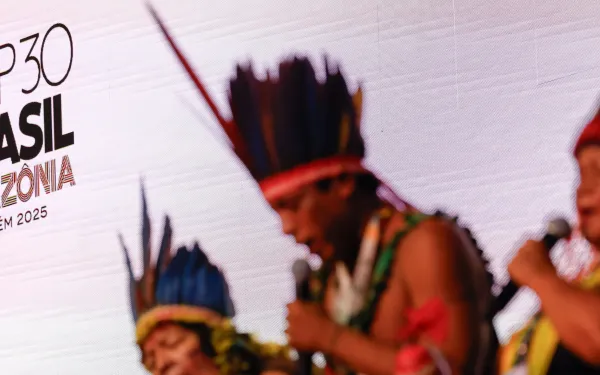
The home stretch of COP30: Shadows, contradictions, and some glimmers of hope
The first week is over, and the political phase of the 30th United Nations Climate Change Conference (COP30) has begun in Belém do Pará, Brazil. These are the days when decisions must be made.A COP had not been held in a country where public protest is possible since 2021 — and people have certainly made their voices heard. On Saturday, a massive demonstration took place: thousands demanded climate justice in the streets, to the rhythm of Amazonian drums. There was also a theatrical "funeral for fossil fuels," reminiscent of Tim Burton, with monsters and somber widows bidding farewell to an era that must be buried.But it has not all been carnival. Indigenous leaders blocked access to the event several times and even entered the "blue zone" — the restricted area — en masse, denouncing the exploitation of their territories. Their discontent is absolute. Although COP authorities met with the group, they soon sent a letter to the Brazilian government requesting increased security and the dispersal of protests. Human rights and environmental organizations have warned about the risks of criminalizing protest and the harmful message this sends about the role of Indigenous peoples.These protests reflect communities that ended up being a minority in an event that promised to be inclusive. There was also widespread criticism of the disproportionately large number of fossil fuel industry representatives involved in negotiations — a dynamic that makes the path toward climate justice even more complicated.Finally, advisory opinions (AOs) must not be left out of this review. While not formally on the agenda, they have made a strong impact. Their central message is powerful: international cooperation is not optional — it is a legal obligation. It is no surprise, then, that the theme keeps resurfacing: in side events, in constant references by civil society and some national delegations, and in cross-cutting mentions across debates on finance, adaptation, and transition. The AOs are not merely being cited; they are being embraced. Momentum is building to fully unleash their potential at this COP and beyond. Negotiations: Four key issues in “presidential consultations”The COP Presidency acted quickly with a novel approach: to adopt the agenda without delays, it set aside four complex issues and moved them into “presidential consultations.”Article 9.1 — Public Funding from Developed Countries. The debate centers on whether climate financing should come only from public sources or also from private sources, as well as on accountability and reporting standards. Developed nations — which are legally obligated to provide this financing — are resisting, while vulnerable countries urgently need the funds to survive the climate crisis.Unilateral Climate-Related Trade Measures. These include policies such as carbon border taxes. They are considered unfair or protectionist, especially by Global South countries with less capacity to reduce emissions. Negotiations aim to prevent arbitrary trade barriers while respecting climate action.NDCs and Ambition. According to the latest NDC synthesis report, there is a significant gap between current commitments and what is required to stay below 1.5°C. Many negotiators argue that agreeing on concrete measures to close that gap is essential, but large emitters continue to resist.Synthesis of Climate Transparency Reports. Under the Paris Agreement’s Enhanced Transparency Framework, countries must periodically report emissions, actions taken, and financial support provided or received. At COP30, the debate centers on how to make these synthesis reports more robust, comprehensive, and useful. The consultations have been tense and slow. On Sunday, the Presidency published a "summary note" outlining possible pathways, and today a draft decision was released, though reactions are still forthcoming. In the coming days, closed-door sessions will continue and could lead to various outcomes. Based on the draft, it seems increasingly likely that COP30 will end with a “cover decision” consolidating all progress and addressing these complex matters. The final scope will depend heavily on what happens during the next four days. A just energy transition: Promises and a mechanism that worksThe Belém Action Mechanism for a Just Transition is a new institutional arrangement under the UNFCCC, championed by NGOs and Global South countries. Its objective is to bring order to the currently fragmented landscape of just transition efforts. The mechanism would coordinate initiatives, systematize knowledge, and provide quality financing and support — essentially evolving the Just Transition Work Program discussed since COP27.Civil society, particularly the Climate Action Network (CAN), has invested enormous effort in developing a strong decision that advances the creation of this mechanism. The G77 + China — the largest negotiating bloc of developing countries — supported this proposal, earning CAN’s "Ray of Light" award, given to actors making significant contributions to climate justice.Some developed countries presented less ambitious proposals, but even that confirms that convergence is drawing closer. Civil society remains optimistic that a concrete, positive outcome will be achieved — and ready to celebrate it. A path to phase out fossil fuelsThis story began in 2023 at COP28 in Dubai, when, for the first time, the idea of phasing out fossil fuels appeared in an official COP text.Now, at the opening of COP30, Brazilian President Luiz Inácio Lula da Silva explicitly referenced a "route" for the energy transition, while Environment Minister Marina Silva has worked to reinforce the political momentum. Meanwhile, Colombia issued a declaration referencing the advisory opinions and seeking international support for the initiative. Several industrialized countries have revived their position through the Beyond Oil and Gas Alliance.Today, 63 countries support a commitment to "Transition Away from Fossil Fuels." However, this is not yet part of the formal negotiation agenda — initiatives remain fragmented, and efforts proceed in parallel. What could emerge is a concrete action plan, a dedicated section in the final decision, or perhaps a roadmap for a future roadmap. The alternative is that it remains a voluntary coalition of willing countries pushing the idea forward. Climate finance: The central — and most complicated — issueFinance remains the central issue at this COP, and perhaps the most complex. Several deeply interconnected discussions are underway:Article 9.1: Developing countries insist that public financing from developed nations is a binding obligation that cannot be replaced by private investment.Adaptation: A strong consensus is forming to triple the adaptation finance goal (to about USD 120 billion annually) while improving transparency and direct access to funds.The Baku–Belém Roadmap: This initiative seeks to scale up global climate finance to USD 1.3 trillion per year by 2035 through a combination of public, multilateral, and private flows.Loss and Damage Facility: The fund is technically operational but not fully capitalized. New contributions from Spain and Germany are welcome — but insufficient to meet global needs.Tropical Forests Forever Facility: Brazil has proposed this as an “investment model” for tropical forest countries. Civil society has expressed serious concerns: the model depends heavily on volatile market investments and lacks safeguards to ensure the protection of local communities and ecosystem integrity. Adaptation progress, but under the shadow of chronic underfundingDiscussions on adaptation are unfolding on two parallel fronts:Indicators for the Global Goal on Adaptation. Ten years after the Paris Agreement, there is still no consensus on how to track adaptation progress. A working group narrowed approximately 9,000 proposed indicators down to about 100, but technical and political challenges persist. Some African and Arab countries have asked to postpone final adoption until they have the financial resources and capacity to implement them. A prevailing sentiment is: "no indicators without funding" — adopting metrics without support would repeat past mistakes.Adaptation finance. Although adaptation financing is not formally included within the Global Goal on Adaptation, the two issues are inseparable. Without adequate financial support, indicators alone will be ineffective. Following the agreement on a new climate finance goal at COP29, the current debate focuses on aligning that goal with adaptation needs — especially through technology transfer, capacity building, and direct-access funding channels. Substantial gaps remain, and negotiations continue to hinge on how to categorize financial flows (private vs. public, domestic vs. international).
Read more
Protecting the Environment Through Collaboration: A Community Science Experience
When environmental damage occurs, the first warning often comes from the people or communities directly affected. Residents living near a river are usually the first to notice waste being dumped or fish dying when the water is polluted. Similarly, who live near an open pit mine are the who see when illness becomes more common or when water begins to run scarce.One powerful way to turn lived experience into scientific evidence is through community science. This approach allows people to share, validate, and integrate local knowledge into scientific research and efforts to defend their territories.At AIDA, we believe in the power of science to advance environmental justice. That’s why we generate and apply scientific knowledge in the legal cases we support. Recently, we had the opportunity to take part in a community science initiative that helped us reflect on—and learn from—the value of this collaborative methodology and the shared knowledge it produces. Local Knowledge: A Powerful Response to Environmental Degradation In April 2024, at the request of the Poqomam Maya community of Santa Cruz Chinautla—a village near Guatemala’s capital—AIDA senior scientist Javier Oviedo and attorney Bryslie Cifuentes carried out a field visit to gather information and assess the solid waste pollution that has affected the community for years.One of their main objectives was to identify illegal dump sites on the banks of the Chinautla River. The disposal of waste and debris in this area has contaminated both the soil and waters of this tributary of the Motagua River, the longest river in Guatemala.While preparing for the trip, Javier realized the team would face several challenges. The time available would not be enough to collect all the necessary data, and the team’s limited familiarity with the area could make locating the dumpsites difficult and potentially unsafe.Then Javier had an idea: to involve members of the community in supporting the team with this task.His plan made perfect sense—after all, who better to locate the illegal dumpsites than the people who know the territory best? Beyond that, by witnessing the impacts of pollution firsthand, community members could also appreciate the importance of documenting these issues.I spoke with Javier about how this idea came about, and he shared the following: Beyond seeking support from community members, this approach was rooted in a recognition of the irreplaceable value of their knowledge as residents of their territory. How the Work Was Carried Out Javier’s idea was that, with the help of an accessible and easy-to-use mobile app, community members could send information about illegal landfills directly to the AIDA Science team, who would then validate and analyze the data.To make this possible, the team designed a form specifying the data they needed to collect: the location of the landfill, its dimensions, the type of waste identified, associated social issues, and other relevant details.In Chinautla, two community residents, along with authorities from the Poqomam Maya village, visited several landfills they had previously identified with Javier and Bryslie. During these visits, Javier showed them how to use the app and fill out the form. Later, one of the residents continued the process independently.Thanks to this collaborative effort, data was collected on 10 of the most critical illegal dumpsites. While this does not capture all of them—unfortunately, many more exist—this sample allowed the team to estimate the extent of waste and debris pollution in the community and to illustrate how poor management has exacerbated the problem.The information gathered was crucial in highlighting the severity of the pollution, demonstrating the continued use of illegal dumping, and exposing the municipal authorities’ failure to meet their legal obligations regarding waste management.This evidence formed the basis for the lawsuit the community filed against the municipality of Chinautla in October 2024, citing the lack of measures to address river and soil contamination caused by inadequate waste management and illegal landfills. In June 2025, an appeals court ordered the municipality to take action to address the serious environmental crisis affecting the community. Lessons Learned from the Experience According to Javier, involving the people of Chinautla in a knowledge-building process led to mutual learning.For community members, it meant acquiring new technological skills. For the AIDA team, it prompted new questions about how to move knowledge-sharing with a community beyond simple collaboration.Javier summarized his learnings in three points: At AIDA, science is a core part of our work and a key element of the strategic litigation we pursue to protect and defend a healthy environment across Latin America. Involving the communities we support in this process broadens our perspective, allowing us to integrate their knowledge and experiences into the science we seek to build.
Read more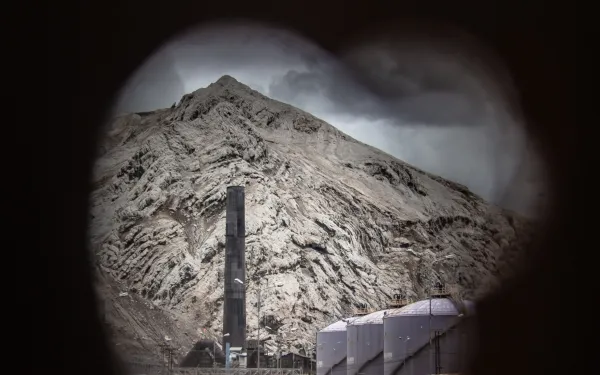
Science in the Service of Environmental Justice
By David Cañas and Mayela Sánchez* Science—or rather, the sciences—are the systems of knowledge that different social groups have developed over time to describe the phenomena of nature and society. Thanks to these knowledge systems, humanity has been able to find solutions to countless challenges, and today, more than ever, they must respond to global crises such as climate change, pollution, and biodiversity loss.Understanding ecosystem processes is essential for protecting the environment and providing verifiable, replicable evidence of natural phenomena and the impacts of human activities. It also enables the development of innovative solutions to protect and restore the environment.For science to contribute meaningfully to environmental justice—a concept centered on ensuring that all people enjoy a healthy environment—scientific work must be grounded in the realities of the people and communities affected by environmental degradation, who live in or rely on ecosystems vulnerable to harm. It must also be built on empathy and respect for other forms of knowledge, while seeking to reduce social inequalities.At AIDA, science is a central part of our work, supporting and complementing the strategic litigation we pursue to protect a healthy environment in Latin America. Through science, we can demonstrate the environmental impacts caused by human activities and hold those responsible accountable. How Do We Do Science at AIDA? The AIDA scientific team is a multidisciplinary group of professionals specializing in diverse fields, including geography, geology, biology, marine biology, oceanography, anthropology, and economics.Among other tasks, they collect and develop scientific evidence to strengthen the legal arguments in the cases we support across our various lines of work—from protecting the ocean and other critical ecosystems to defending human rights, such as the right to health and access to safe drinking water.The strategic use of science has been central to AIDA’s work since the organization was founded more than 25 years ago. One early example is the case of La Oroya in Peru, where a group of residents sued the government for failing to protect them from decades of heavy metal pollution caused by a metallurgical complex.Then we did something that had not been done before: we connected existing studies with the lived reality of La Oroya. This approach allowed us to demonstrate the relevance of the case and establish a clear link between pollution and its impact on the health of the city’s residents. Our analysis, compiled in the report La Oroya Cannot Wait, served to build the legal case and formulate proposals to the Peruvian government for corrective and preventive measures to address the problem. In 2024, in a decision that set a historic precedent for state oversight of industrial pollution, the Inter-American Court of Human Rights held the Peruvian state responsible and ordered it to adopt comprehensive reparations measures. Among the scientific team’s more recent contributions is a geospatial analysis of the Salar del Hombre Muerto in the Argentine provinces of Catamarca and Salta. Using maps and satellite imagery, the team documented water loss in this ecosystem caused by lithium mining.Another example is the expert report on solid waste pollution in the tributaries of the Motagua River in Guatemala, in which we recorded and characterized illegal dumps along the banks of the Chinautla River. This work enabled the affected communities to gather the evidence needed for the lawsuit they filed against the municipality of Chinautla for failing to address the contamination of rivers and soil caused by inadequate solid waste management. The Right to Science When science serves social and environmental justice, its benefits extend to everyone. This purpose was recently upheld by the Inter-American Court of Human Rights in its Advisory Opinion 32, which recognizes the “right to science” as the right of all people to enjoy the benefits of scientific and technological progress, as well as to have opportunities to contribute to scientific activity without discrimination.The Court also recognized indigenous, traditional, and local knowledge as equally valid forms of knowledge. This acknowledges how the deep understanding that indigenous peoples and local communities have of their environment—their worldview based on respect and interdependence, and their spiritual connection to nature—has been fundamental to ecosystem conservation.As an organization that uses science as a tool for environmental protection, we believe in a science that embodies these principles: one built on dialogue between different forms of knowledge, whose benefits reach all people, and which contributes to the socio-ecological transformation the planet urgently needs. *David Cañas is AIDA's Interim Director of Science; Mayela Sánchez is our digital community specialist.
Read more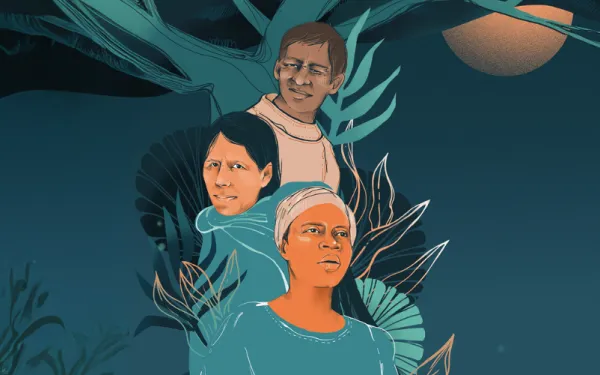
A Practical Toolkit for Using Advisory Opinion 32/25 in Climate Justice Work
READ AND DOWNLOAD THE TOOLKIT The climate crisis is already affecting people and communities across Latin America and the Caribbean—damaging homes, livelihoods, ecosystems, and the fundamental right to a healthy environment.Advisory Opinion 32/25 of the Inter-American Court of Human Rights is the first of its kind to establish that both States and non-State actors—including companies—have clear and binding legal obligations to confront the causes and consequences of the climate emergency as a human rights issue.The historic interpretation, made public on July 3, 2025, gives human rights and environmental defenders a powerful new tool to demand action and justice.But how can this decision be used in real cases, campaigns, and policies today? A Legal Toolkit for Climate JusticeTo help answer that question, more than 20 experts and organizations—including AIDA—created a new publication analyzing the Court's decision with an emphasis on its practical applications.Climate Justice and Human Rights: Legal Standards and Tools from the Inter-American Court’s Advisory Opinion 32/25 contains 14 briefs, organized into four key areas:Foundational Rights and Knowledge;State and Corporate Obligations;Rights of Affected Peoples and Groups;Environmental Democracy and Remedies. Each brief contains:Context and background to situate the issue.A clear legal analysis of the Court’s key contributions.A critical look at how these standards can be applied in practice.Identification of opportunities to advance advocacy and litigation, as well as the gaps that remain. All content was rigorously peer-reviewed to ensure clarity and accuracy. Why Does This Matter Now?With OC-32/25, advocates and local communities across the region now have:Stronger grounds for litigation—incorporating human rights standards into climate-related cases.Legal leverage for corporate accountability—clarifying businesses’ duties to prevent and remedy harm.Arguments to expand protections for those most affected: children, women, Indigenous Peoples, Afro-descendant communities, and environmental defenders.Policy tools to demand national climate actions aligned with human rights. In a region facing disproportionate climate risks, this decision shifts power toward communities and movements seeking justice.What You Can Do With This ToolkitThis publication is a tool to facilitate understanding of the Court's decision and promote concrete legal and political actions to protect communities and ecosystems from the climate emergency.It is addressed to individuals, communities, organizations, and networks working on the climate crisis and human rights issues, providing them with standards and practical recommendations to strengthen their litigation and advocacy strategies and efforts.In short, it's designed to help you incorporate strong legal arguments your work, including:Shaping urgent protection actions for frontline communities.Strengthening advocacy campaigns with legal backing.Informing climate legislation and public policy debates.Supporting community-led demands for adaptation and resilience.Integrating human rights standards into strategic litigation. Whether you are a lawyer, organizer, community leader, or policymaker—this toolkit can help you to turn legal standards into real protection and accountability. A Call to ActionLatin America has contributed least to global emissions but is among the most impacted by climate harms. OC-32/25 opens a new chapter: one where the defense of human rights is also the defense of our climate.Now is the time to use this decision to advance justice across the region.Together, we can transform this legal milestone into tangible protections for the people and places who need them most. READ AND DOWNLOAD THE TOOLKIT
Read more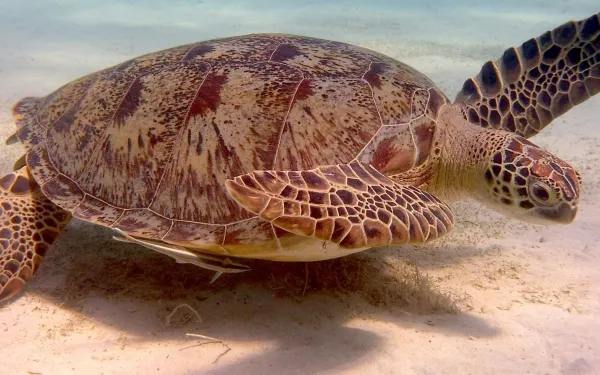
High Seas Treaty: A Major Step Forward for a Healthy, Resilient Ocean
The world is celebrating a key milestone for keeping our oceans healthy and resilient for present and future generations.This month, the final requirement was met for the entry into force of the High Seas Treaty—a long-sought agreement that is essential for the protection and sustainable use of two-thirds of the ocean, nearly half of our blue planet.The high seas are areas beyond national jurisdiction and one of the largest reservoirs of biodiversity on Earth, home to an incredible variety of marine life. They also provide food and oxygen, regulate the climate, buffer the impacts of the climate crisis, and support the livelihoods of communities that rely on fishing and tourism.After more than 20 years of discussions and over five years of formal negotiations, governments agreed on the text of the treaty at the United Nations headquarters on March 4, 2023. The treaty was formally adopted on June 19 of that year.But that was not the end of the story.For the treaty to enter into force and be implemented, it needed to be ratified by at least 60 countries—a milestone that was finally reached on September 19. The treaty will officially take effect 120 days later, on January 17, 2026.At AIDA, we have contributed to this process for many years, helping ensure that the needs of Latin America are part of both the treaty’s design and its implementation.The High Seas Treaty—short for the Agreement on the Conservation and Sustainable Use of Marine Biological Diversity of Areas Beyond National Jurisdiction (BBNJ Agreement)—offers numerous benefits. Among them, it calls for the creation and proper management of marine protected areas on the high seas to conserve and restore the ocean’s rich biodiversity.The treaty also requires that any new activity on the high seas undergo environmental impact assessments, including consideration of the cumulative effects of multiple activities on a single ecosystem.AIDA’s Role in Protecting Life on the High SeasFrom the negotiation of the High Seas Treaty to the present day, AIDA has played an active role in the process, co-leading Latin American civil society contributions to help secure a strong and effective agreement.We have done this as part of the High Seas Alliance, a coalition of more than 70 organizations working to preserve biodiversity in the high seas, where AIDA serves as regional coordinator for Latin America. In this role, we have ensured that the realities, expectations, and challenges of the continent are incorporated into the Alliance’s strategies.During the treaty negotiations, we supported Latin American delegations through internal and regional processes, providing briefings on the benefits and obligations of the agreement. In doing so, we helped strengthen the region’s capacity to engage effectively, drawing on our scientific and technical expertise.Looking ahead to implementation, we have also provided technical support to regional delegations participating in the Preparatory Committee sessions, a United Nations body tasked with advancing the issues that will be addressed at the treaty’s first Conference of the Parties (COP).Countries that ratify the treaty will be able to participate in the COP, where key decisions will be made regarding implementation and the activation of the treaty’s benefits. The first COP session will take place one year after the treaty enters into force.Beyond this much-anticipated ratification, it is essential that all countries—not just the initial 60—join the agreement to ensure fair, equitable, and sustainable governance of high seas biodiversity. This will guarantee effective implementation, fulfillment of conservation objectives, and participation in the treaty’s benefits.At AIDA, we will continue working with a Latin American focus to ensure that the High Seas Treaty translates into concrete actions for the protection and sustainable use of the high seas—a shared responsibility of all governments.
Read more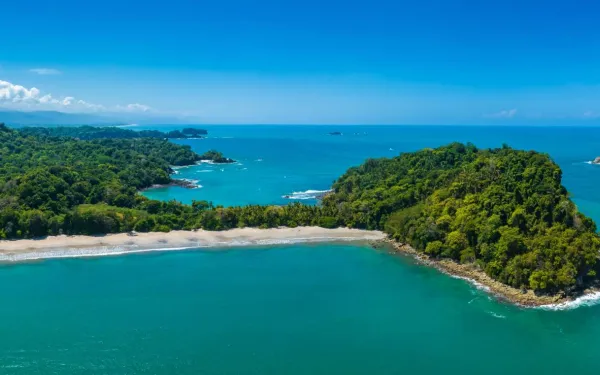
The Ocean-Climate Link: 5 Things to Know
Por Víctor Quintanilla y Natalia Oviedo*Although the ocean is essential for stabilizing the planet's climate, it is rarely the focus of attention when we talk about the global climate crisis.The ocean is our best ally in the face of the climate emergency because it absorbs much of the greenhouse gases that humanity emits and that are the source of the problem.At the same time, the ocean is a victim of the climate crisis, whose impacts are pushing it to the limit with acidification of its waters, rising sea levels, and loss of oxygen, processes that seriously affect marine life.Despite its importance, the relationship between the ocean and climate has not been fully included in international negotiations in which governments seek agreements and policies to address the climate crisis.Faced with this gap and in a historic breakthrough, the International Tribunal for the Law of the Sea issued a ruling in 2024 clarifying the obligations of States to protect the marine environment from the climate crisis.Below, we present five keys to understanding the link between the ocean and climate.1. The role of the ocean in the climate crisis.According to the Intergovernmental Panel on Climate Change, the ocean is “a fundamental climate regulator on timescales ranging from seasonal to millennial.” Since 1955, it has absorbed 90 percent of the excess heat caused by global warming, along with a quarter of the carbon dioxide released by human activities.Ocean currents transport warm water from the tropics to the poles, sending colder water back. This balances the temperature and makes much of the Earth habitable. The ocean influences climate variations on land by being the main source of rain, which feeds rivers and other vital freshwater systems.The ocean is known as a lung for the planet because, through microscopic organisms known as phytoplankton, it is responsible for generating approximately half of the world's oxygen supply. In turn, coastal ecosystems such as mangroves, marshes, and seagrass beds absorb enormous amounts of carbon from the atmosphere, mitigating the climate crisis. 2. The impact of the climate crisis on the ocean.The climate crisis alters the physical and chemical properties of the ocean, affecting its ability to regulate the climate. One of the irreversible impacts of climate change is ocean warming, whose rate and heat absorption has more than doubled since 1993. As its waters warm, they begin to release carbon dioxide back into the atmosphere.In addition, rising ocean temperatures are expected to reduce the amount of oxygen available, altering nutrient cycles and thereby affecting fish distribution and abundance. Another consequence is sea level rise, which is due to thermal expansion of the ocean and loss of land ice.Finally, the absorption of increasing amounts of carbon dioxide has resulted in ocean acidification, understood as a decrease in pH. This reduces calcium levels, a substance necessary for the shells and external skeletons of various species of marine fauna and ecosystems such as coral reefs.3. The inclusion of the ocean in international climate negotiations.Although the link between the ocean and climate change has been recognized since the beginning of negotiations under the United Nations Framework Convention on Climate Change (UNFCCC)—by including the ocean in the definition of “climate system”—its presence in these negotiations has been gradual. A decisive milestone occurred at the 25th UN Climate Change Conference (COP25) in 2019, where the first official dialogue on the subject was called for, resulting in recommendations to align climate and ocean action, while also promoting the mobilization of financing to protect marine ecosystems. Since then, the ocean has earned a permanent place on the climate agenda. At subsequent conferences, the inclusion of the ocean was further expanded. The Glasgow Climate Pact (COP26, 2021) recognized the ocean as an ally in carbon absorption, called for the integration of ocean-based action into UNFCCC work plans, and mandated an annual dialogue on the topic. At COP27 (2022), countries were encouraged to include ocean-based action in their nationally determined contributions (NDCs). And at COP28 (2023), the ocean was included in the first global stocktake of the Paris Agreement.Ahead of this year's COP30 in Brazil, which will have a specific agenda on “Forests, Oceans, and Biodiversity,” the challenge is to move from political recognition to the implementation of concrete actions to protect the ocean.4. States' obligations to protect the ocean in the face of the climate crisis.The health and resilience of the ocean is essential not only for addressing the climate crisis, but also for the exercise of fundamental human rights such as life, health, culture, food, access to water, and the right to a healthy environment. This highlights the interdependence between the ocean, climate change, and human rights.Recognizing this link, on May 21, 2024, the International Tribunal for the Law of the Sea issued an important decision clarifying the obligations of States to preserve the ocean in the face of the climate crisis. These duties include adopting concrete mitigation measures to minimize the release of toxic substances into the marine environment, as well as exercising strict due diligence to ensure that non-state actors effectively comply with such measures.The tribunal emphasized the obligations of states to prevent climate change-related pollution that affects other states and the marine environment outside national jurisdiction. In relation to the right to a healthy environment, the ruling emphasizes the use of precautionary and ecosystem approaches in the context of states' obligations to conduct environmental and socioeconomic impact assessments of any activity that may cause marine pollution related to climate change. This includes that, in the face of the possibility of serious or irreversible damage to the marine environment, the lack of full scientific certainty should not be used as an excuse to delay protective measures.5. Some key actions to protect our ocean and, with it, the climate.Effective protection of our ocean requires the commitment of governments, which must act at the national and international levels to prioritize its health. These include:Prioritizing concrete measures that integrate the ocean into climate mitigation and adaptation actions. Among the most effective are the protection and restoration of ecosystems, especially those that, in addition to capturing and storing enormous amounts of carbon, protect coastlines and maintain vital ecosystem services (mangroves, marshes, seagrass beds, coastal wetlands, and coral reefs, among others).Ensuring the protection and sustainable use of biodiversity in the ocean area beyond national jurisdiction. This involves the effective implementation of the High Seas Treaty, which will enter into force on January 17, 2026, as well as its ratification by countries that have not yet done so, to ensure fair, equitable, and sustainable governance.Defending the deep sea from mining. This requires imposing moratoriums on deep-sea mining activities on the grounds that there is insufficient technical and scientific information to prevent, control, and mitigate the potential impacts on the biological diversity of unknown ecosystems in deep waters and on the seabed.Protect the rights of coastal and island communities, which depend on fishing and local tourism for their livelihoods. These populations face increasing impacts from the climate crisis and multiple environmental pressures. Governments have a responsibility to ensure their resilience and well-being by safeguarding the marine and coastal biodiversity that sustains their ways of life and culture.Acknowledging the link between the ocean and climate, and translating it into concrete and effective measures, is essential to protect and maintain the balance of both life systems.This is what will guarantee the health of marine and coastal biodiversity, our food security, and, ultimately, a future for the planet.* Víctor Quintanilla is AIDA's Content Coordinator; Natalia Oviedo is a Costa Rican international lawyer and former intern at the organization.
Read more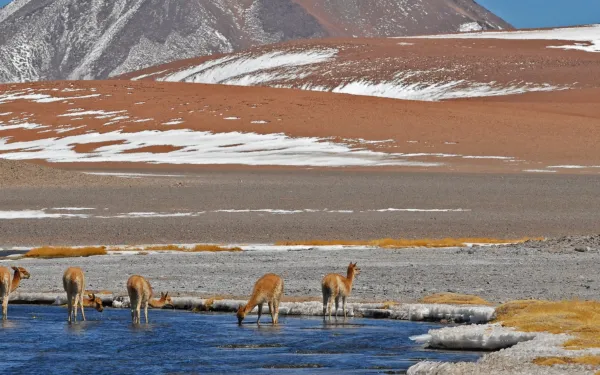
Circular economy: what is it and what role does it play regarding the climate crisis and energy transition?
Life on the planet, including our own, depends on nature.To create more sustainable ways of life and keep global warming under control, we need to ensure healthy, resilient, and productive ecosystems.The climate crisis, as well as the pollution and biodiversity loss crises, stem from human activities that exploit nature beyond its limits, without giving it a chance to recover, degrading ecosystems and pushing them to points of “no return.”These activities are based on the conventional economic model, which is linear and follows the logic of extracting, producing, using, and discarding resources.A more sustainable use of natural resources requires a different economic model.One option among many is the circular economy, an economic model of production and consumption traditionally described as a combination of reduction, reuse, and recycling activities.However, most current approaches to the circular economy, incorporated into various public policies, focus on extending the life cycle of products that have already been manufactured. They do not comprehensively incorporate the processes of extracting the materials needed to manufacture the products or their final disposal. This considerably reduces the protection of nature and territories during the economic cycle.That is why it is important to understand what the circular economy is and what it should include, in theory and in practice, so that it can truly contribute to a more sustainable and fair world. Circular economy: Definition and challengesAs an alternative to the linear economic system, the circular economy involves closing the economic cycle through various mechanisms. These include reducing the use of virgin natural resources, increasing the use of recycled materials, and minimizing waste through the repair and reuse of products, keeping them in circulation for as long as possible.It also means creating additional value for products whose useful life has ended when their materials are used again and again. In the face of our continued and unsustainable use of resources, the concept of the circular economy is becoming increasingly prevalent in different areas.Although it is a living and evolving concept, when it becomes public policy, most definitions of the circular economy consider its main objective to be economic prosperity, with environmental care as a secondary result.In 2020, a legal definition of the circular economy in the European Union considered it to be “aneconomic system whereby the value of products, materials and other resources in the economy is maintained for as long as possible, enhancing their efficient use in production and consumption, thereby reducing the environmental impact of their use, minimising waste and the release of hazardous substances at all stages of their life cycle” …This and other definitions show that the positive effects of the circular economy on nature tend to be taken for granted, when certain theories or practices associated with the concept may actually hinder the protection of ecosystems and the people who depend on them.This is happening with the type of circular economy promoted to make extractive processes linked to the energy transition, designed to address the climate crisis, environmentally friendly. Circular economy and energy transitionHistorically, extractive activities such as mining have degraded ecosystems and violated human rights in Latin America, creating so-called “sacrifice zones.”Today, to address the climate crisis, several international organizations have positioned an energy transition that requires doubling the production of renewable energies and electromobility to decarbonize the global energy matrix.This also implies intensifying the extraction of so-called "critical" minerals for the development of clean technologies. One of these is lithium, a mineral of which the region has large reserves.Thus, far from putting an end to it, the energy transition promoted by the Global North is renewing the historical extractivist trend, generating great pressure on Latin American territories rich in minerals for the transition, affecting ecosystems and populations near extraction areas.In this context, the circular economy is promoted as a tool to make mining an environmentally responsible process. However, international proposals in this regard do not guarantee the resilience of ecosystems or the well-being of communities.This is evident in countries such as Argentina, Bolivia, and Chile due to the growing global demand for minerals such as lithium.Currently, the circular economy applied to mining in Latin America focuses on the internal processes of mining companies, but not on the consequences that their interactions with ecosystems and communities generate in the extraction territories, without stopping the expansion of extractivism or the high socio-environmental impacts caused.Obtaining lithium for electromobility, for example, involves a complex, transnational supply chain. This includes mineral extraction, refining, the production of electrodes for batteries, battery manufacturing, and finally, the manufacture of electric vehicles.From a global northern perspective, the circular economy is mainly applied here to battery recycling and industrial improvements for mining. However, it does not include measures to protect the biophysical limits and resilience of the ecosystems where lithium is extracted, ensure environmental restoration, prevent damage to local economies, guarantee human rights, and repair those that have already been violated. Proposals from Latin America for a just circular economyTo ensure that the energy transition does not become a new extractive process that generates the same conflicts and environmental impacts that it has systematically caused and that are precursors to the current climate crisis, it is essential that the circular economy comprehensively integrates the mineral extraction territories.Circular economy schemes must avoid the creation, expansion, and/or deepening of “sacrifice zones.” They must also recognize the strategic value of ecosystems as natural capital for countries and communities, given the ecosystem functions they provide, including freshwater supply and carbon capture.To move towards a just circular economy in the extraction territories, the following principles must be respected:Protection of the human rights of local populations, guaranteeing their permanence in the territory and the continuity of their economic activities, linked to their livelihoods and their relationship with ecosystems.Promotion of environmental balance in accordance with the biophysical limits of ecosystems, recognizing their intrinsic values, which favor the conservation of their functions.Internalization of environmental costs in mineral value chains, incorporating the value of ecosystem services used for extraction into prices.Learn more in our policy brief Reimagining the circular economy from the extraction territories. Proposals from Latin America.
Read more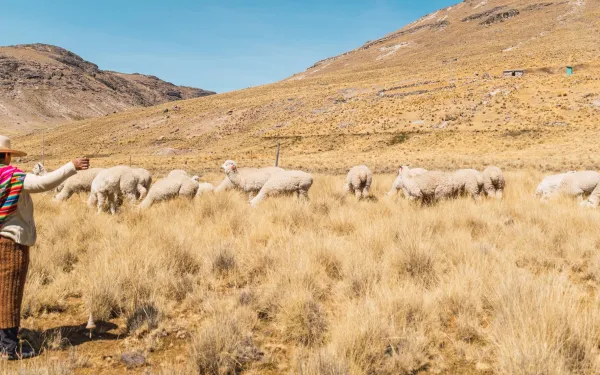
The Inter-American Court's Opinion: 7 reasons it matters for climate justice
On July 3, the Inter-American Court of Human Rights released its long-awaited Advisory Opinion No. 32 (OC-32), clarifying the scope of States' obligations in the face of the climate crisis – including, among other responsibilities, the duty to guarantee the right to a healthy climate.This marks the first time that a regional human rights court has made a broad and comprehensive statement on the issue of climate change.The opinion was issued in response to a request submitted by the governments of Chile and Colombia in January 2023. It is also the outcome of an unprecedented participatory process within the Inter-American Human Rights System, in which dozens of States, civil society organizations, Indigenous peoples, activists, and academics engaged through oral statements in public hearings and a record number of written submissions.Below are seven reasons why this landmark decision — written in and for Latin America — represents a turning point for climate justice in the region and beyond. 1. Clarifying States’ legal obligations in the face of the climate emergencyIn its decision, the Court affirms that the world is currently experiencing a climate emergency—a crisis driven by human activities, unequally generated by different States, and one that progressively and severely impacts people, especially those in vulnerable situations.In response, the Court underscores that States have binding legal obligations—not merely voluntary commitments—to confront this emergency with “urgent and effective actions, articulate, with a human rights perspective, and under the prism of resilience.” This means that, amid the climate emergency, States are required to respect and guarantee human rights. 2. Recognizing the human right to a healthy climateFor the first time, the Court explicitly recognizes the autonomous human right to a healthy climate, derived from the broader right to a healthy environment. This recognition establishes that States must protect the ability of both present and future generations to live in a climate system free from dangerous human-caused interference.Protecting this right—which underpins the enjoyment of other human rights—also requires honoring the principle of intergenerational equity. In practice, this means that States must act today to ensure that future generations inherit conditions of environmental stability that allow for equal opportunities for well-being and development. 3. Strengthened protection for people in vituations of VulnerabilityAdvisory Opinion No. 32 establishes that States must ensure that individuals and groups in situations of particular vulnerability — including women, children, Indigenous peoples, Afro-descendant communities, peasant and fishing communities, older adults, persons with disabilities, LGBTIQ+ individuals, and human rights defenders, among others — are able to exercise their rights on equal terms in the face of climate impacts.The Court also recognizes that certain territories in the Americas — such as the Amazon, the Insular Territories, and Caribbean States — are especially vulnerable to the effects of climate change. 4. Emissions control and regulation of business activitiesAccording to the opinion, States are required to set clear greenhouse gas (GHG) mitigation targets and maintain an up-to-date mitigation strategy grounded in human rights. They must also tighten and rigorously regulate both public and private activities that produce GHG emissions.In line with these mitigation strategies, States must determine which projects or activities require an environmental impact assessment that explicitly evaluates potential climate impacts. 5. Protecting human rights within the energy transitionAdvisory Opinion No. 32 underscores that States must safeguard human rights from potential violations linked to the extraction of minerals and other resources necessary for the energy transition.The Court also affirms that States are obligated to ensure the fair distribution of both the burdens of climate action and the impacts of climate change. This includes avoiding disproportionate burdens on certain populations — for example, in how the costs of the energy transition are allocated. 6. Recognition of traditional knowledge in climate actionThe opinion recognizes local, traditional, and Indigenous knowledge as protected under Inter-American human rights treaties and as a key part of the best available science. This recognition opens new avenues for demanding the inclusion of such knowledge in climate solutions.The Court thus reaffirms that the right to science also encompasses the intellectual and practical contributions that Indigenous peoples, Afro-descendant communities, and other local groups have sustained and safeguarded over generations. 7. Advancing the global movement for climate justiceThis decision reinforces and builds upon earlier rulings, such as the one issued in May 2024 by the International Tribunal for the Law of the Sea, which clarified States’ obligations to protect the marine environment from the effects of the climate crisis. It also contributes to ongoing global legal efforts — including the forthcoming Advisory Opinion from the International Court of Justice, which will further define States’ responsibilities in the face of the global climate emergency.Together, these decisions are strengthening the global movement for climate justice, as well as supporting citizen demand for stronger government action.
Read more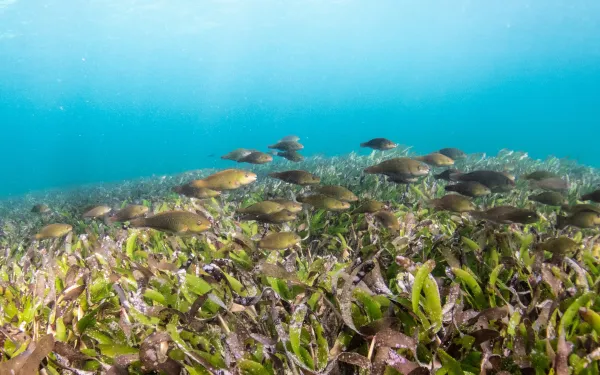
The natural wonders we could protect with the High Seas Treaty
For decades, the ocean has protected us from the impacts of climate change, absorbing 90 percent of the excess heat produced by global warming. It’s given us food and the genetic resources we use to produce life-saving drugs. As if that weren’t enough, it’s enabled millions of families to thrive in an economy based on its bounty.Despite its importance, the ocean remains unprotected in large part; no country governs the high seas, international waters that comprise 64 percent of the ocean’s total surface area. Management measures have given rise to a patchwork of uncoordinated protections.To fill this gap, in June 2023, UN member countries formally adopted an agreement to protect biodiversity in the high seas, which requires ratification by at least 60 countries to enter into force.The High Seas Treaty - short name for the Agreement on the Conservation and Sustainable Use of Marine Biological Diversity of Areas beyond National Jurisdiction (BBNJ Agreement) - proposes, among other aspects, the creation and adequate management of marine protected areas (MPAs) in the high seas, regions that would allow for the conservation and rescue of the rich biodiversity found in the ocean. Protection at a high costIn addition to absorbing a large part of the planet’s excess heat, the ocean absorbs nearly 30 percent of all greenhouse gases, which are responsible for climate change.But this protective role comes with serious consequences. By interacting with and absorbing pollutants such as carbon dioxide, the ocean suffers from acidification - a phenomenon that reduces the levels of calcium, an element necessary for the shells and external skeletons of several species of marine fauna - and loss of oxygen, essential for life under the sea.These impacts consequently affect the food supply and employment in the fishing and tourism industries.Faced with the impacts of the climate crisis on marine ecosystems, governments must do much more to protect the ocean, starting with ratifying the High Seas Treaty, which establishes a clear legal framework and process for maintaining its health and resilience. Protected natural wondersAs the ratification of the High Seas Treaty progresses, there is growing interest from governments and civil society to lay the groundwork for greater protection of the high seas.As part of this push, areas of high ecological value have been identified that could form the first wave of protection once the treaty goes into effect. High Seas Alliance - a coalition of organizations of which AIDA is a member - has highlighted 8 priority sites that could be part of this first generation of MPAs, which it has called the Hidden Natural Wonders of the World:Salas y Gómez and Nazca Ridges: Deep in the waters of the southeastern Pacific, these two unique chains of submarine slopes and peaks are separated from South America by the waters of the Humboldt Current and the enormous chasm of the Atacama Trench. They are critical habitats and migratory corridors for at least 82 threatened or endangered species, along with many others of ecological and economic importance.The Termal Dome: Each year in the eastern tropical Pacific, strong seasonal winds push warm waters from the coast offshore, where they meet cooler waters carried by ocean currents. This interaction causes a unique upwelling system that brings cold, nutrient-rich waters to the sea surface, benefiting many species.Emperor Seamounts: Located in the North Pacific, this chain of more than 80 seamounts extends for 2,000 kilometers on the seafloor between the northwesternmost point of the Hawaiian Islands and the Kuril-Kamchatka Trench (Pacific Northwest). Its nutrient-rich waters feed a great diversity of species. And in the mountains, a range of corals and sponges shelter countless species of fish and invertebrates.Walvis Ridge: It is a range of seamounts that extends for about 3,000 kilometers off the coast of southwestern Namibia to the mid-Atlantic ridge (submarine ridge that runs along the Atlantic Ocean). It is composed of several seafloor types and includes many features of the deep ocean floor, along with its abyssal plains, seamounts and guyots (seamounts).Sargasso Sea: It is the only sea in the world without land borders. It is geographically defined by four Atlantic Ocean currents in an area of about 1,100 kilometers wide and 3,200 kilometers long. It is called the “golden rainforest of the high seas” because of the sargassum algae that float on its surface and provide habitat for a myriad of species, while absorbing and storing carbon and producing oxygen.South Tasman Sea: Located between Australia and New Zealand, it is a diverse and dynamic area that supports abundant marine life. It is also an important breeding area and migratory corridor for a large number of species, including endangered species such as the Antipodean albatross, which often transit its waters.The Lost City: It is a complex of 30 hydrothermal vent chimneys located on the upper slopes of the Atlantis seamount massif in the North Atlantic Ocean. The complex of vents rises 4,300 meters from the seafloor, with peaks at a depth of 750 meters. The Lost City chimneys are believed to be more than 120,000 years old.Saya de Malha: Located in the heart of the Indian Ocean, midway between the Seychelles and Mauritius, this unique seascape is home to the world’s largest seagrass community. It is a rare example of seagrass meadows on the high seas and the largest submerged ocean bank in the world, covering more than 40,000 square kilometers.Preserving these natural wonders through marine protected areas requires the entry into force of the High Seas Treaty.It is time to take care of the ocean as it takes care of us.
Read more